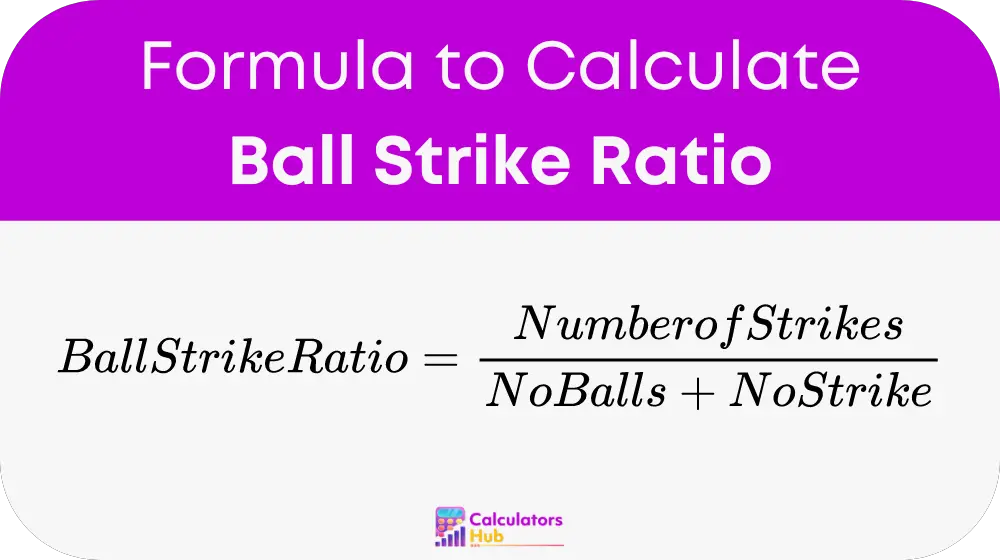The Ball Strike Ratio Calculator is designed to measure the proportion of strikes a pitcher throws relative to the total number of pitches. This ratio is an important indicator of a pitcher’s command and control on the mound. By providing a clear numerical value, the calculator helps coaches and analysts assess a pitcher's performance and make informed decisions regarding training and game strategy.
Formula of Ball Strike Ratio Calculator
The ball strike ratio can be calculated using the following detailed formula:

Where:
- Number of Strikes is the total count of strikes.
- Number of Balls is the total count of balls.
This formula provides a straightforward way to determine the efficiency and control of a pitcher by comparing the number of strikes to the total number of pitches thrown.
Helpful Conversion Table
To assist users with various measurements and terms needed when calculating the ball strike ratio, here is a table of common terms and their definitions:
| Term | Definition |
|---|---|
| Number of Strikes | Total count of strikes thrown by the pitcher |
| Number of Balls | Total count of balls thrown by the pitcher |
| Ball Strike Ratio | Ratio of strikes to total pitches thrown |
This table serves as a quick reference to clarify concepts frequently encountered when using the Ball Strike Ratio Calculator.
Example of Ball Strike Ratio Calculator
Consider a pitcher who has thrown the following pitches in a game:
- Number of Strikes = 45
- Number of Balls = 30
Using the Ball Strike Ratio Calculator:
- Ball Strike Ratio = 45 / (45 + 30) = 45 / 75 = 0.60
This calculation shows that the pitcher’s ball strike ratio is 0.60, indicating that 60% of the pitches thrown were strikes.
Most Common FAQs
The ball strike ratio is a key indicator of a pitcher's control and effectiveness. A higher ratio suggests better command over pitches, which is crucial for success on the mound.
A ball strike ratio of 0.60 or higher is generally consider good, indicating that the pitcher throws more strikes than balls, which typically leads to better performance.
Yes, the Calculator can be apply at all levels of play, from little league to professional baseball, to assess and improve pitching performance.